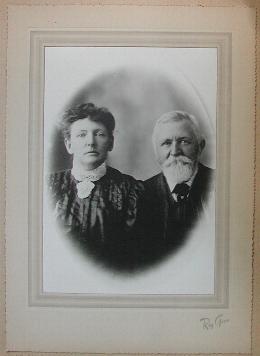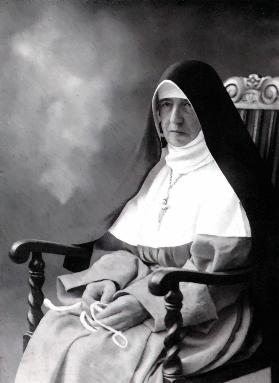HOME BIRTH CAN BE AN OPTION
JONATHAN LUKE HOLLOWAY
ur daughter Aurora was born at
home without any medical intervention, but with the assistance
of a lay-midwife. Women have been doing this for millions of
years. In Tennessee we are blessed in that the art of
midwifery is unregulated (Tennessee Code 63-6-204 1990). This
is not true in all states. In Tennessee, birth certificates
are easily obtained from the local health department. [This is
now changed legally and midwives in the State of Tennessee are
now required to be registered.] Midwives can be found through
many different sources, including health food stores and
alternative health care providers. This is an option for any
woman who is in good health and who is not expecting
complications with the delivery.
In America today, most babies are born in hospitals under the care and direction of a doctor. There are numerous reasons why babies are born in hospitals, including those which are financial, social, technological and pharmaceutical. My baby could have been born in a hospital at no actual cash expenses to me, all of the medical expenses being covered by insurance. While actual costs involved with hospital births are very high, many women have their babies in hospitals purely for financial reasons. (This demonstrates an idiosyncracy in our health care system.)
When money is no object, some women choose to obtain the finest medical care available. For this they hire highly skilled physicians with the ability to monitor and cope with nearly any complication that may occur. These physicians have very advanced tools, competent nurses, and the finest technology at their fingertips. Many women appreciate knowing that the doctor will control the birth with the assistance the doctor deems as the finest tools available to themselves.
Women have been advised by the American College of Obstetricians and Gynecologists that home birth is dangerous (Brodsky 31). This belief is supported by what Archie Brodsky, a senior research assistant at Harvard Medical School, describes as a 'decline in maternal and infant mortality that coincided with the shift to medicalized, institutionalized childbirth in this century' (Brodsky 31). However, Brodsky goes on to point out that there were many other advances, including sulfur drugs and antibiotics, sanitation and personal hygiene, that occurred around the same time period that most women started birthing in hospitals.
While I believe home birth to be comparably safe to hospital births, no birth is completely risk free. However, there is a mounting body of evidence that the interventionist attitude prevalent in the medical community today is dangerous. Even the very things that the medical community touts as benefits can actually be harmful. Drugs often play a role in women choosing a hospital birth. Doctors have the ability to relieve most of the pain associated with labor. The fear of pain can be a powerful argument for hospital birth. Yet these same drugs can irreparably damage the child or the mother.
Oxford University carried out a study called 'The Pregnancy Project'. For ten years a research team of about forty doctors, mathematicians and health experts, headed by Dr Murray Enkin, Professor Emeritus of McMasters University in Ontario, looked at standard hospital births. Here are some of their findings:
37 were rated 'possibly effective', needing more exploration.
88 had 'unknown effects', requiring more research.
60 were rated 'should be abandoned', as they do little good and are even dangerous.
Monitoring a fetus' health plays a definite role in childbirth. When my wife was in labor our midwife, Miriam, would listen to our baby's heartbeat with a fetal stethoscope periodically. This style of fetal monitoring is very unobtrusive. My wife had the ability to move about freely throughout her labor. Most hospitals, however, use electronic fetal monitors. They use these monitors despite studies published in prestigious magazines like the New England Journal of Medicine and The Lancet that have shown 'that in the absence of specific indications for its use, electronic fetal monitors not only have no demonstrated benefit in reducing disabilities but may even be dangerous' (Brodsky 29). Dr Brodsky was very concerned about electronic fetal monitoring because a doctor would read these monitors looking for problems, and if a problem arose, the doctor would intervene. Brodsky maintains that this contributes to a 24% Caesarian section rate in the United States. 'Indeed, any medical intervention in child birth tends to necessitate further intervention by disrupting the normal physiology of labor . . . ' (Brodsky 29,30).
The Oxford team also criticized common birthing positions used in hospitals. Doctors will have women lie on their backs or with their feet in stirrups and their pelvises tilted. This has been shown to interfere with the baby's blood supply (Ubell 1-3). My wife delivered our baby squatting. She said she couldn't imagine doing it any other way. Our midwife had to lie on the floor on her back to examine my wife and to catch our daughter. Most doctors would have found this position beneath their level of professionalism.
Most midwives believe the use of drugs during labor to be unwise. This feeling goes to the heart of the issue of natural childbirth. I see child birthing as a natural physiological condition not requiring medical intervention. Drugs affect a woman's natural ability to deliver safely. Safety at a home birth depends on encouraging the mother's natural process. Drugs interfere with this process, thereby creating added risks (Brodsky 30). I believe a woman should choose whatever style of care she is most comfortable with, including pain management. However, I recognize pain as my body's way of telling me something is wrong, like a broken leg. Archie Brodsky hopes 'more women may approach the pain of child-bearing in a more positive way' (Brodsky 30). I believe this approach to pain is more easily achieved at home. At home, the woman giving birth is in charge and everyone present is her guest. One thing that needs to be pointed out is that no matter where the woman has her baby, there will be pain - even in a hospital.
People who are considering giving birth at home should be encouraged by credible studies showing the relative safety of a lay-midwife-attended home birth. A community in Summertown, Tennessee, called 'The Farm', was the subject of an extensive scientific study that suggested that 'support for home birth should not be withheld on the grounds that this option is inherently unsafe' (Durand 252). A. Mark Durand, M.D., found that the 1700 births attended to by lay-midwives at 'The Farm' were statistically as safe as comparable hospital births (Durand 451). Durand contributed some of 'The Farm''s success to an atmosphere that nurtures the mother's natural ability to deliver (Durand 452). He even went on to suggest that hospitals 'encourage passivity . . . diminishing her [the mother's] ability to deliver spontaneously' (Durand 452).
My wife made the choices involved with giving birth to our child, recently. She was blessed with the opportunity to choose between having a doctor-attended birth in a hospital or staying home and having her friend, a lay-midwife, come over and assist her. There was considerable pressure to go to the hospital to deliver - pressure from my wife's mother, her doctor, and from the community at large. My wife weighed her options, and when she considered the risks of hospital birth compared with the empowerment of home birth, she chose to stay home. This choice has turned into a living thing - by that I mean my daughter Aurora Violet - but I also mean the living knowledge that laboring mothers are, as Ina May Gaskin puts it, 'an elemental force . . . like a hurricane . . . with their own laws of behavior' (Gaskin 348).
Even my mother-in-law, who came into her
granddaughter's home birth with a very critical mind, left the
birthing with the knowledge that a hospital is no place for the
elemental force that is a healthy woman giving birth.
Works Cited
Brodsky, Archie. 'Home Delivery - Midwifery Works - So Should Midwives'. Reason (March 1992), 28-34.
Durand, Mark A. 'The Safety of Home Birth: The Farm Study'. American Journal of Public Health, 82:3 (March 1992).
Gaskin, Ina May. Spiritual Midwifery. Summertown, Tennessee: The Book Publishing Company, 1990.
Tennessee Code 63-6-204, 1990.
Ubell, Earl. 'Are Births as Safe as They Could Be?' Parade Magazine (7 February 1993).
Jonathan Luke's
mother gave him the name 'Luke
', that of the Physician Gospeler, hoping he would be, like
her grandfather, a doctor. Her grandfather had delivered her
mother in a tent in South Africa. She had desired home-birth
for her three sons, Richard, Colin and Jonathan, but this was
not allowed. She almost died at twenty-one as the result of
both a doctor's and a nurse's interfering interventions in a
hospital with the birth of her first child. She had begged for
home-birth, failing that, for natural childbirth in the
hospital. Instead that birth, with dangerous spinal anesthesia
ordered by her doctor, in a hospital for millionaires,
resulted in life-threatening kidney damage, and ironically
coincided with the natural - and unattended -
childbirth, without anesthesia, of a baby in the waiting room
of the same supposedly sterile hospital by a gypsy mother, accompanying a
seriously ill gypsy prince. Her second son, Colin, when
twenty, delivered her first grandson, Akita Mani-Yo, at home.
She agrees with her third and second sons that home birth
should be chosen. Moreover, that mothers
should nurse their children at the breast, as she did with all
three sons, though scathingly criticized for this as
un-hygienic and un-American by her doctor, the hospital
nurses, her children's father, her husband's mother. We are
not sterile machinery, we are mammalian and definitely human;
our bodies are the temples of the Spirit, of God. If we, in
the First World, like the Virgin Mary, lovingly and in public
can nurse our babies at the breast, then will Third World
mothers do so, their progeny not dying of unboiled water and
diluted milk fed to them in plastic bottles, next placed on
their tiny graves. (Alas, with AIDS, Third World mothers
should no longer nurse their dying babies.) We need to
re-humanize and deify the Holy Family
.
Julian of Norwich speaks of Christ as
Mother, in whom we are all born and to whom we shall all
return. She
speaks
of a great secret that God shall do at the end of time, that
shall make all things well. Perhaps it is that time will run
backwards, that we shall each return to our mothers' wombs,
like Russian dolls, undoing all trauma, back to Eve and to
Christ the Creator, creating us that morn in Eden's fair
Garden.

This was painted by Eileen
Mary Bolton , the Christmas my first son, Robin/Richard
Ben Holloway, was born. In it she shows her contemporary Welsh
shepherds keeping their sheep, and a mother sheep, her baby
lamb, recalling the Anglo-Saxon
Nunburnholme sculpted cross which has a mother and baby
centaur beneath the Holy Family, joking with Jerome's text on
'St Paul and St Anthony', in which even pagan mythical
centaurs proclaim Christ.


UMILTA WEBSITE || OLIVELEAF WEBSITE || JULIAN OF NORWICH, TEXT AND CONTEXTS ||
BIRGITTA OF SWEDEN, REVELATIONES,
WEBSITE || CATALOGUE AND PORTFOLIO
(HANDCRAFTS, BOOKS ) || BOOK
REVIEWS || BIBLIOGRAPHY || FLORIN WEBSITE ©1997-2022 JULIA BOLTON HOLLOWAY

Blessed Olive Branch,
Kenyan olive-
wood bowl, William Morris
Print
| To donate to the restoration by Roma of Florence's
formerly abandoned English Cemetery and to its Library
click on our Aureo Anello Associazione:'s
PayPal button: THANKYOU! |